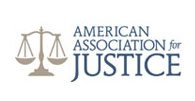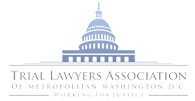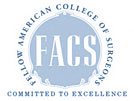When more than one party is potentially liable for causing an accident that caused injuries to another, those parties are called joint tortfeasors. How important is it to determine who exactly the joint tortfeasors are? This determination will greatly impact a settlement or verdict, essentially the most important part of a personal injury case.
Here is one example: two employees from Hospital A commit medical malpractice while one employee from Hospital B acted negligently in their care of a patient. That means it would seem that three individuals could be held liable for damages. However, each individual hospital is one joint tortfeasor. In this scenario, since there are two entities, the facilities would be held liable as a whole, regardless of the number of employees involved.
Calculating the Settlement Percentage
In order to determine liability for each party responsible, the rule of comparative negligence determines how much the parties’ actions contributed in detail to the accident. Pro rata calculates the dollar amounts that these parties must pay out to victims. Let’s say that a third hospital, Hospital C, employed three individuals to look after the same patient and were then accused of negligence. There are now three joint tortfeasors involved. Hospital B, the second hospital that treated the patient, may or may not have been the initial cause of malpractice. Knowing this, they can try to settle with the victim for a lesser sum than Hospital A may have to face.
These are some of the outcomes when one joint tortfeasor settles:
- Monetary compensation is guaranteed for the victim
- The defendant’s participation in the case ceases
- The non-settling defendants can receive pro rata credit for what was paid by settling defendant
In the scenario, Hospital B chose to settle with the client, while Hospital A and C are taken to trial. The last hospital can try argue that Hospital A had greater responsibility in causing the accident. While settling early on may prevent a victim from receiving maximum compensation from other parties involved, many choose to settle for less to ensure they receive some type of compensation, rather than risk losing it all.
The laws of pro tanto allow a reduction in settlement for non-settling defendants who are determined not to be joint tortfeasors. If Hospital C, for example, was found not to be a joint tortfeasor, Hospital C can receive pro tanto credit to reduce the amount of damages that they were first required to pay.
Talk to Our Team About Your Case
If you believe more than one party contributed to your injuries, talk to a Washington D.C. medical malpractice attorney from The Law Offices of Dr. Michael M. Wilson, M.D., J.D. & Associates as soon as possible! We can review the circumstances of your situation and help you settle for the maximum recovery available.
Your free initial consultation awaits; give us a call today!
Visit Our Medical Malpractice Law Offices

Dr. Michael M. Wilson is an attorney and a physician who earned his undergraduate degree from the Massachusetts Institute of Technology and his legal and medical degrees from Georgetown University. He has focused in the area of medical malpractice for more than three decades and secured more than $100 million in settlements and verdicts on behalf of clients throughout the country. He is admitted to practice in the District of Columbia and New York as well as the U.S. Court of Appeals for the District of Columbia and the U.S. Supreme Court. He is listed in America’s Top 100 High Stakes Litigators.













